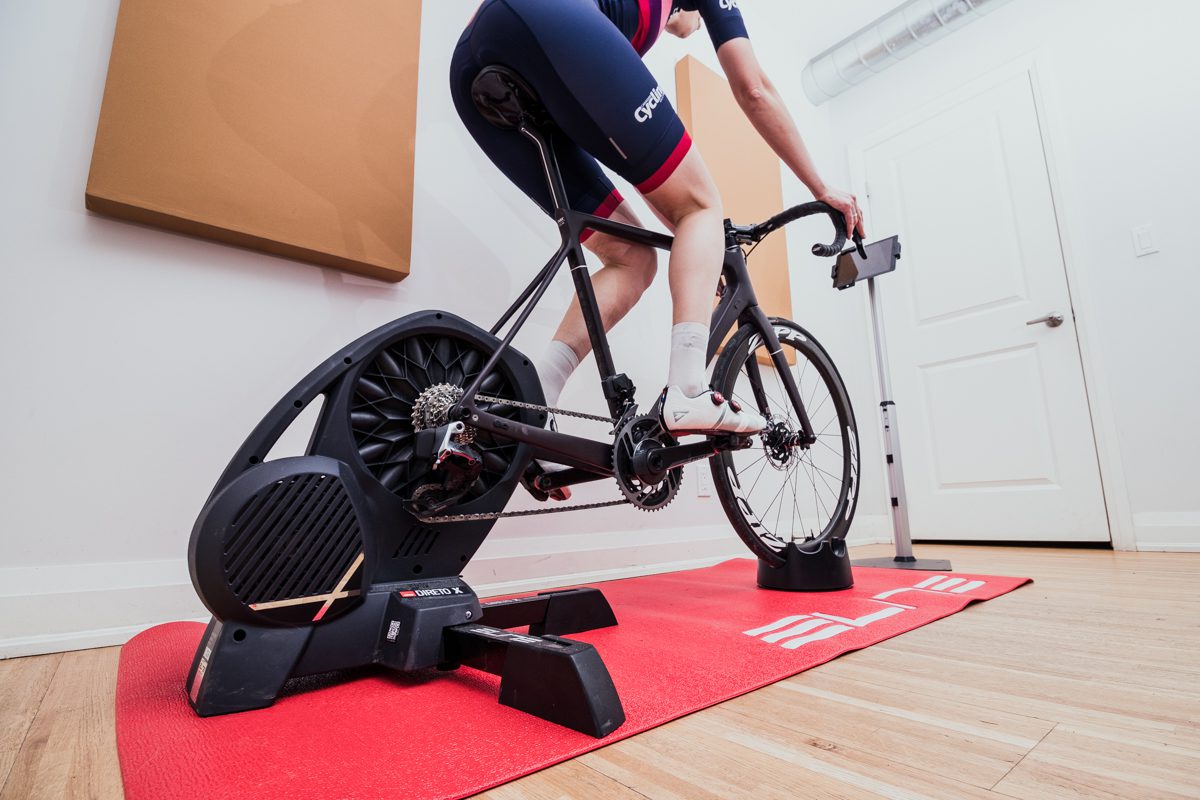How to select the right smart trainer mode
When to use erg, slope and simulation modes

by Andrew Randell and Steve Neal of The Cycling Gym
Back when we started riding, winter training meant doing workouts on a set of rollers with a mag unit and, ideally, watching some VHS videos of old Tour de France stages. Since then, the world of indoor training has exploded with smart trainers, as well as simulation and training software.

The biggest change recently has been the invention (you might say reinvention as the CompuTrainer had been around for years) of the smart trainer. When paired with the right software to control resistance, the smart trainer can help to create an engaging experience. You can ride courses and experience a workout that does its best to mimic the outdoors.
RELATED: Everything I learned using the Elite Nero smart rollers
When you pair a smart trainer with software to control it – examples include Zwift, TrainerRoad, PerfPro and Xert – there are really three ways that the trainer can behave: simulating an outdoor course, holding a specific resistance target in erg mode and mimicking different grades in slope mode.
When we talk about riding a course, we are referring to features such as importing your Garmin file into the software and riding your favourite route. The gradient will change up and down, and your trainer will adjust the resistance. You have to manage your effort just as you would outdoors, shifting gears accordingly and paying attention.
In erg mode, you don’t have to change gears. With this mode, you can build a workout, such as a step test in TrainerRoad, and then, without touching your leavers, do the workout while the trainer controls the wattage.
The third option, which can also be used to build workouts in software such as PerfPro, is slope mode. At the gym, this is how we build most of our workouts. Similar to the course option, a slope-based workout varies the gradient against which you ride as the workout progresses. As with course mode, you use your gears and cadence to manage your effort.
Of the above options, our least favourite is erg mode. This may be the easiest way to spend time on the trainer and watch Netflix, but it isn’t the most realistic. When you ride, your power is constantly fluctuating. Erg mode keeps the body under constant tension as it pushes the set wattage to the trainer. This isn’t how our bodies work. We have even seen that riding in erg mode seems to increase a rider’s lactate production. The whole idea behind this smart trainer movement is to make the trainer more engaging and to mimic the outdoors. Erg mode does neither of these. The one place where erg mode can be valuable is in testing. We like to use a three-minute step test to failure. With this mode and the same power meter for each test, you know that you have data you can compare to check on your fitness.
RELATED: How to set up Zwift – the most cost-effective way
Riding courses on Zwift is a lot of fun. We have to focus in order to do the work we have planned for the day. The great thing is the ability to pick a course that is appropriate for your workout: long hills, rolling or flat. Where people get into trouble on Zwift is by constantly racing and riding at threshold. They dig themselves into a hole in the winter, getting too fatigued, and then find themselves without motivation to ride outdoors when the weather gets better.
Finally, using slope mode to build a workout is a great option that combines the focus of resistance training that is variable and has a more natural feel. The slope mode can be built to accommodate short punchy intervals, long grinders and endurance. Each of the above options meets a need in your training. We feel that perhaps the most important thing to keep in mind about indoor training is to use it to really get ready for your outdoor season. Use the tools available wisely to get ready and don’t leave your motivation buried in the basement.


